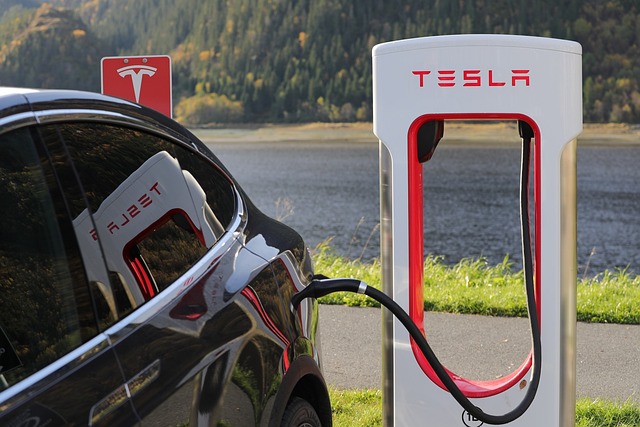Contents
- Renewable energy sources
- The rivers
- The movement of ocean waters
- Wind
- Organic material
- Sun
- The internal heat of the Earth
- Non-renewable energy sources
- Fossil fuels
- The power of the atom
For millions of years our planet has permanently received energy from the Sun, which has modified our environment and allowed life to develop. Today, most of the energy we use comes directly or indirectly from this star. We must save our energetic resource.

Energy sources are elements of nature from which energy can be extracted. Humanity has used these energy resources throughout its history to promote its development and improve its living conditions.
Energy sources are usually classified into renewable and non-renewable energies, as we will see below:
Renewable energy sources
Renewable energy sources are those whose rate of use is lower than their rate of renewal, that is, after being used they regenerate naturally or artificially. The main sources of renewable energy are:
The rivers
When the radiant energy from the Sun raises the temperature of the oceans and large bodies of water, it is activated, it is known as the hydrological cycle. In this cycle, the water that evaporates is transferred to higher continental regions, from where it precipitates mainly in the form of rain or snow. When this water descends, due to the effect of gravitational potential energy, it gives rise to water courses known as rivers. When the river’s fluid moves, kinetic energy is produced; and when this water is stored in a dam, it is retained in the form of gravitational potential energy, which is used to generate hydroelectric energy, that is, electrical energy obtained from the transformation of the potential and kinetic energy of the water.
The movement of ocean waters
The movement of the waves of the oceans occurs mainly as a result of winds and storms. On the other hand, the tides originate from the gravitational pull of the Moon and the Sun. Today, a series of technologies capable of obtaining electrical energy from this source have been developed. This energy is known as marine energy: tidal energy (when it takes advantage of the energy of the tides), wave energy (when it uses the energy of the waves) and thermal conversion (OTEC, Ocean Thermal Energy Conversion) (when the thermal energy of the sun absorbed by the oceans).This is the most energetic resources.
Wind
The spherical shape of our planet allows the energy from the Sun to be distributed unevenly over the atmosphere, the oceans and the earth’s surface. Consequently, there are regions that receive more energy and others that receive less. When certain areas of the atmosphere heat up less than others, the movement of the large masses of gas that make it up occurs and, with this, winds (when air movements are horizontal) and air currents are created. (when the movements are vertical). This source of energy has been used since ancient times to move boats in the oceans or to turn windmills. The energy associated with this renewable source is known as wind energy, and produce energetic resources.
Organic material
Organic matter also stores energy from the Sun, in the form of chemical energy. Plants and some microorganisms are capable of storing the Sun’s energy from the photosynthesis process, in which sunlight, water and CO2 in the atmosphere are used to form molecules based on carbon, hydrogen and oxygen.
Animal, industrial, agricultural, forestry, urban and sewage waste are also sources of organic matter. The energy obtained from said source is called e energy biomass.
Sun
As we have already mentioned, almost all of the energy that enables our planet’s processes comes directly or indirectly from the Sun. The Sun is a star whose energy is produced from nuclear fusion, in which hydrogen atoms fuse to generate helium atoms. In this process, a large amount of radiation is released, including infrared radiation, which raises the temperature of the Earth’s surface, and visible light, which allows a series of biological processes necessary to support life on Earth. . The energy that is harnessed directly from the Sun is called solar energy. the sun hit produce energetic resource.
The internal heat of the Earth
The temperature of the lower layers of the Earth – mantle and core – is very high, mainly due to the decay of radioactive materials inside, such as uranium and potassium, among others. The high temperatures rise in the fractures of the earth’s crust and are manifested in the form of geysers, fumaroles, boiling mud pits, volcanoes and hot springs. In certain regions this internal heat of the Earth is used to produce electricity. The energy associated with this source is called geothermal energy.
Non-renewable energy sources
Non-renewable sources are those in which the resource is limited and is depleted as it is used. Therefore, its consumption speed is greater than that of regeneration. Non-renewable energy sources are:
Fossil fuels
They correspond to resources whose origin is due to the degradation of plant and animal remains that were buried by a sedimentation process, remaining trapped in the lower layers of the earth’s crust millions of years ago. Coal, oil and natural gas are fossil fuels. The electrical energy obtained from the use of this resource is called thermoelectric energy.
The power of the atom
Uranium is an element from which energy is extracted through the division of the nuclei of its atoms. This process is known as nuclear fission: when a uranium nucleus is divided, a large amount of energy is generated in the form of radiation and heat. The heat is used to produce electricity known as nuclear energy or thermonuclear energy.














+ There are no comments
Add yours